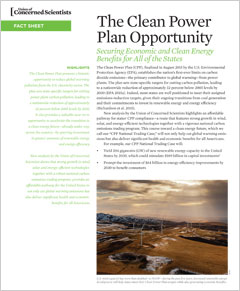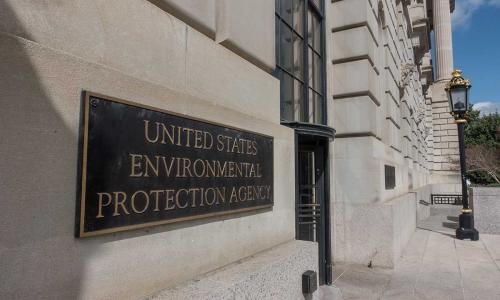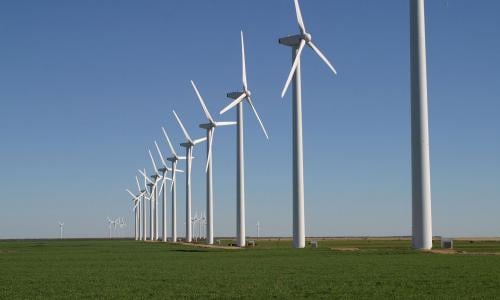The Clean Power Plan establishes the nation's first-ever limits on carbon dioxide emissions—the primary contributor to global warming—from power plants.
The plan sets state-specific targets for cutting carbon pollution, which collectively lead to a nationwide reduction of approximately 32 percent below 2005 levels by 2030.
Analysis shows that strong growth in renewable energy and energy-efficient technologies, together with a national carbon emissions trading program, provide an affordable and achievable pathway for the United States to cut global warming emissions.

Accelerating our nation's transition to clean energy
Most states are well positioned to meet their assigned emissions-reductions targets, given their ongoing transitions away from coal generation and their commitments to invest in renewable energy and energy efficiency.
This new analysis highlights an affordable pathway for states to comply with the Clean Power Plan (CPP). This course toward a clean energy future, or "CPP national trading case," would not only help diversify our nation's electricity mix and cut global warming emissions but also deliver significant health and economic benefits across the country.
This pathway would:
- Yield 204 gigawatts (GW) of new renewable energy capacity in the United States by 2030, which could stimulate $189 billion in capital investments
- Prompt the investment of $64 billion in energy-efficiency improvements by 2030 to benefit consumers
- Generate an average annual revenue of $17.8 billion from the sale of carbon allowances during the 2022 to 2030 period that can be used for public benefit
- Provide $103 billion in public health and climate benefits through 2030 by decreasing carbon dioxide (CO2), sulfur dioxide (SO2), and nitrogen oxides (NOx) pollution
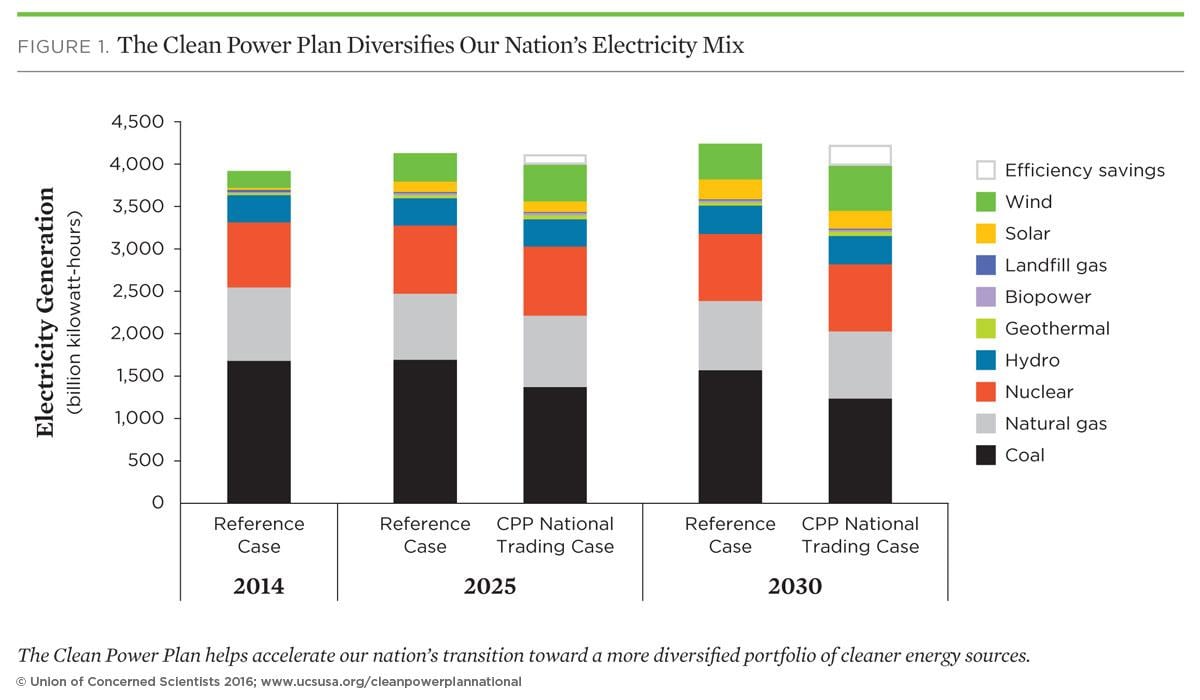
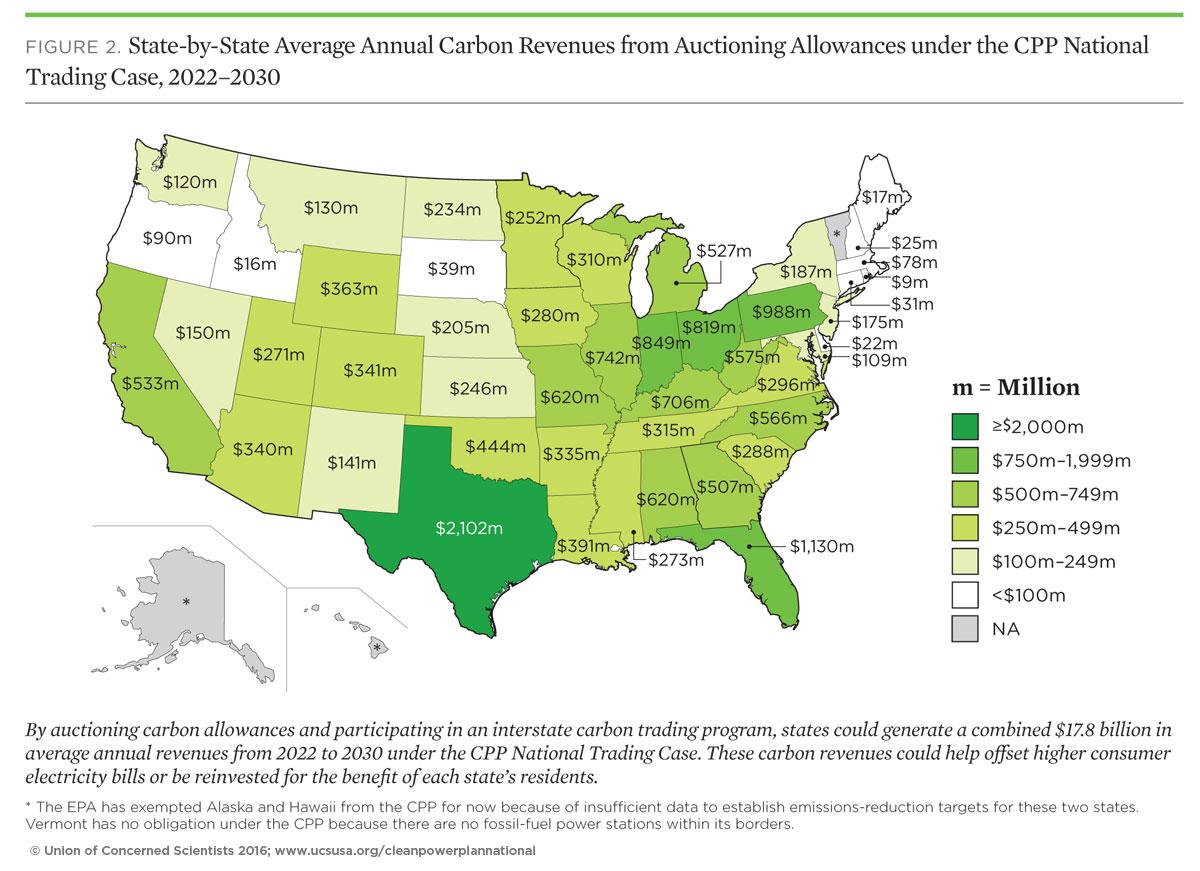
Note on the analysis: These benefits do not include the effects of the recently adopted extension of federal tax credits for wind and solar, which were not considered in this analysis due to timing constraints. Accounting for these tax credits as part of Clean Power Plan compliance would very likely lead to even greater near-term consumer, economic, and public health benefits.
Recommendations
Achieving the National Trading Case’s full range of benefits will require policy makers and regulators across the country to work with utilities, electricity generators, advocates, regional transmission organizations, and other stakeholders to develop state compliance plans that prioritize renewable energy and energy efficiency and generate revenue through interstate carbon emissions trading.
- States should develop strong mass-based CPP compliance plans. In building its plan, each state should prioritize renewable energy and energy efficiency, and it should develop a mass-based emissions trading program that includes both new and existing sources and allows for interstate trading of carbon allowances. While some states could benefit from a rate-based approach, from a national perspective a mass-based approach offers a lower administrative burden, has a long history of successful implementation, and provides the greatest certainty for achievement of an emissions budget.
- States should ensure an equitable transition to a clean energy economy. To ensure that disadvantaged communities benefit from the transition away from coal, state compliance plans should include specific provisions for meaningfully engaging with residents in these communities and conducting an environmental justice analysis to evaluate localized impacts of the plans. States should also address transition assistance for coal-dependent communities and adopt measures to minimize the potential for concentrating fossil fuel generation in overburdened communities and creating co-pollutant “hot spots.”
- As needed, state legislatures should authorize the auction of carbon allowances as part of their state’s emissions trading program. Revenues generated from the auctions should be directed toward programs that benefit all residents, reduce carbon emissions, and promote equitable approaches to transitioning to a low-carbon economy.
- Congress and state legislatures should enact strong clean-energy policies. Policy makers at all levels of government should adopt new or enhanced policies and programs aimed at hastening the deployment of renewable energy and energy efficiency. These measures should include: (1) adopting new, or strengthening existing renewable electricity standards and energy efficiency resource standards; (2) extending tax and other financial incentives; (3) developing carbon-pricing programs; and (4) encouraging clean energy innovation.
With well-designed policies and careful planning and coordination, all states across the country could greatly enhance their clean energy resources, affordably comply with the emissions reductions required by the Clean Power Plan, and reap important economic and public health benefits.
These benefits would help ensure a sound and prosperous future for all Americans.
